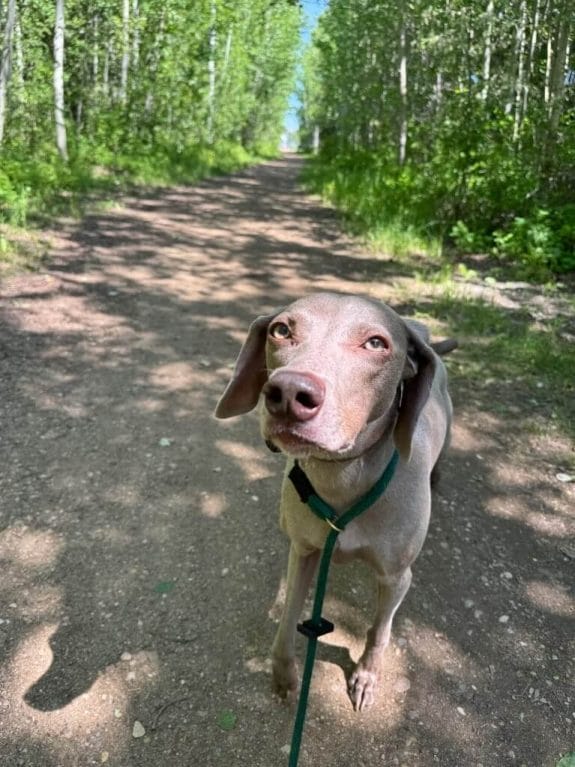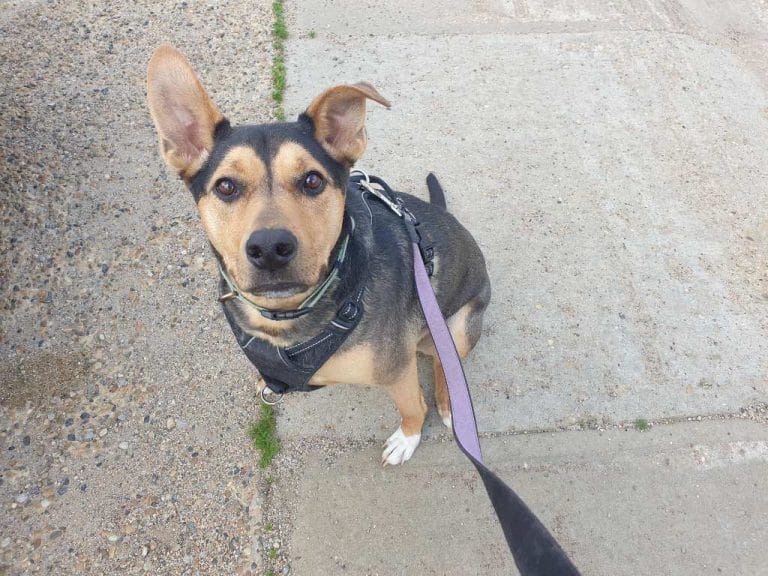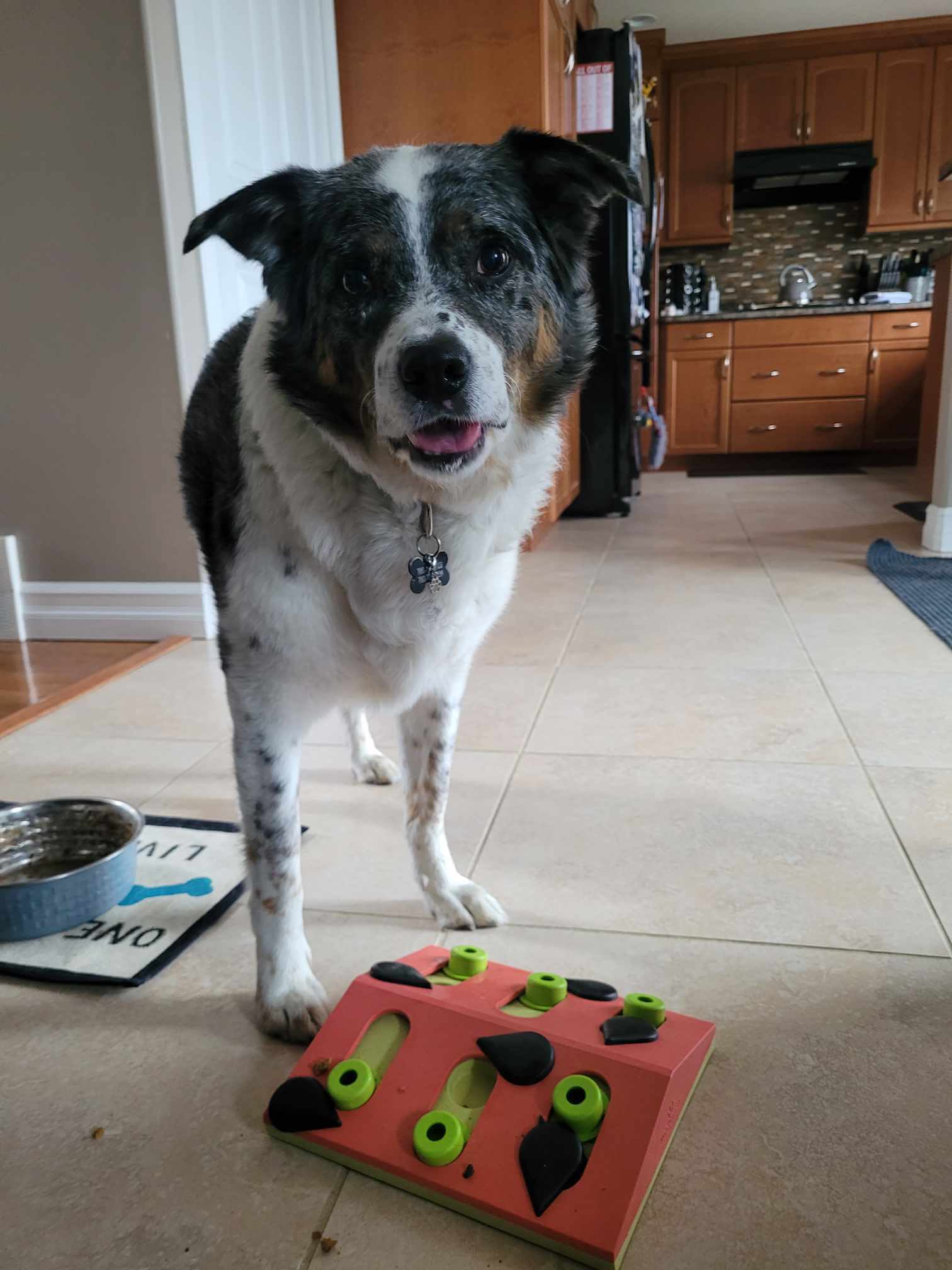
During the summer season in Fort McMurray, it’s essential to take extra precautions when walking your dog. The heat can lead to serious issues such as heatstroke, dehydration, paw pad burns, and even sunburn. Here are ten tips from WeCare Pet Services to keep your dog safe and comfortable during summer walks.
Key Takeaways
- Choose the right time of day for walks.
- Check the pavement temperature before walking.
- Carry water for you and your dog.
- Always keep your dog on a leash.
- Contact your veterinarian immediately if your dog shows signs of distress.
1. Consider the Time of Day
Timing is crucial when walking your dog in the summer. Schedule walks during the cooler parts of the day, such as early morning or late evening. These times typically have lower temperatures and a reduced risk of pavement burns. Avoid walking between 10 a.m. and 4 p.m. when the pavement is hottest and the sun is strongest. If you do have to venture out during the mid-day heat – make sure to keep your walk short – just long enough for your dog to do their business – then back home for cool inside playtime.
2. Always Bring Water
Hydration is vital for dogs, especially in hot weather. Always a good idea to carry a portable water bottle and a collapsible bowl during walks. Offer your dog water breaks every 15–20 minutes to prevent dehydration. Dogs can’t cool down as efficiently as humans, so keeping them hydrated is essential.
3. Protect Their Paws
Hot pavement and asphalt can cause burns and blisters on your dog’s paw pads. Avoid walking on hot surfaces and consider using paw balm for protection. To test the pavement, place the back of your hand on it for a few seconds. If it’s too hot for your hand, it’s too hot for your dog’s paws!!! Opt for grassy trails to minimize exposure to those hot surfaces.

4. Choose Shaded Paths
Select walking paths that offer shade to minimize your dog’s exposure to direct sunlight. Trees, buildings, or covered trails can provide relief from the sun and help prevent overheating. One of the best features found in Fort McMurray – are the vast paths & trails in the Boreal Forest. Plan your route to ensure there are shaded areas for your dog to rest and cool down.
5. Take Frequent Breaks to avoid Heat Stress
During hot walks, allow your dog to take breaks and rest in shady spots. Avoid overexertion and pay attention to your dog’s cues for increasing body temperature. The early signs of heat stress include: excessive panting or trouble breathing, weakness, agitation/pacing and stumbling. If you notice these signs, find a cool place to rest and offer small sips of cool water immediately.

6. Use Sun Protection
Did you know that dogs can suffer from sunburn, particularly on areas with white or thin fur and exposed skin like the nose and ears? You can apply pet-safe sunscreen to these areas! Use sunscreen specifically formulated for dogs, as human sunscreen contains ingredients toxic to pets such as Zinc Oxide, Parabens and Titanium Dioxide. Alternative protection includes; hats, shirts, goggles or other attire that can protect them from the sun’s rays.

7. Keep Your Pup on a Leash and Ensure ID Tags Are Updated
Always keep your dog on a leash to prevent them from running off or getting into dangerous situations. Dogs can get easily distracted by new smells, other animals, wildlife and nearby activities – no matter how much recall you have with your dog – there is aways a chance they could take off. Ensure ID tags are up to date with your contact information in case they get loose, and your pet is registered with the city in your area.
8. Watch for Signs of Heatstroke
Heatstroke is a life-threatening condition that can occur when a dog’s body temperature rises too quickly. Symptoms include excessive panting/gasping, rapid heartbeat, foaming around the mouth, inability to drink, dizziness, vomiting, bright red tongue and collapse. If you suspect heatstroke, move your dog to a cool area, wet their feet, belly and groin area with cool water and contact your veterinarian immediately.
Click here to learn more about pet safety in the summer heat.
9. Consider Shorter Walks
On extremely hot days, shorten your walks to reduce time spent in the sun. Instead of one long walk, take multiple shorter walks during cooler hours to ensure your dog gets enough exercise without overheating
10. Stay Mindful of Certain Breeds
Some dog breeds are more prone to heat-related issues. Brachycephalic breeds (“flat faced”), like English Bulldogs and Pugs, have difficulty cooling down due to their shorter snouts. Dogs with thick coats or underlying health conditions, and senior pups may also struggle in the heat. Take extra precautions and be mindful of your dog’s breed and individual needs when planning walks.

Bonus Tip: Create Fun Indoor Activities
When temperatures soar, provide alternative ways for your dog to stay active indoors. Use puzzle toys, treat-dispensing toys, or hide-and-seek games to keep your dog mentally stimulated and entertained. These activities can help burn off energy without exposing your dog to the heat.
Summer walks can be enjoyable and safe by following these tips from WeCare Pet Services. Prioritizing your dog’s well-being and taking necessary precautions will ensure that your summer walks are a fun and safe experience for both you and your pet.










